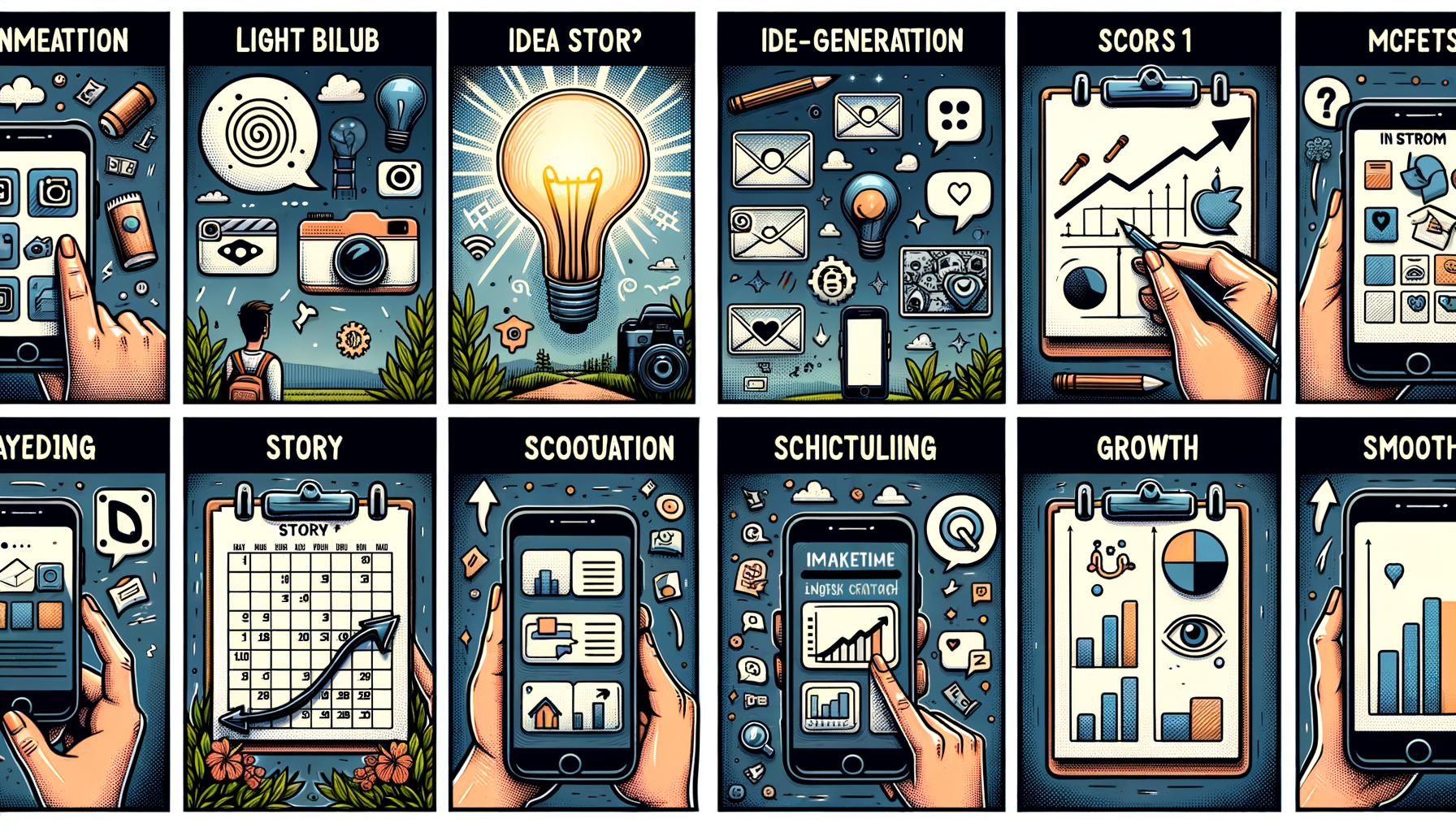“Mastering the Art of Scheduling your Instagram Stories: A Comprehensive Guide”

Instagram Stories have taken the world of social media marketing by storm. They provide a unique and creative avenue to express your brand story, promote new products, and engage your audience. However, to leverage this feature, you need to know how to schedule Instagram stories, ensuring you maintain a consistent schedule and produce timely, relevant content.
First and foremost, let’s delve into why you need to schedule Instagram Stories.
A significant number of businesses are incorporating social media into their marketing strategies. It’s therefore vital to consistently maintain a robust online presence. Instagram Stories, with their ephemeral 24-hour lifespan and 500 million daily users, offer a fantastic opportunity for businesses to engage their audience.
Consistent posting on Instagram contributes to increased visibility. Scheduling stories enables you to keep your content fresh and timely for your audience. It’s also a time-saver – you can create multiple posts at once and schedule them to be automatically published at optimal times.
Notwithstanding, there are a few things you need to understand before you go ahead and start scheduling your Instagram Stories. This discussion delves into the ‘how-to’ of scheduling Instagram Stories.
#. Identifying the Right Content for Your Instagram Story
Before anything else, you need to determine the right content for your Instagram Story. This is because content is king when it comes to Instagram Stories. This involves identifying your audience’s interests, your brand values, and your marketing goals. The best-performing Instagram Stories are genuine, share a behind-the-scenes view, or showcase a compelling narrative. They often feature custom designs, interactive components, video, or creative features like polls. Also, Instagram’s vertical formatting lends itself well to images or videos taken from a mobile device, adding authenticity.
#. Creating the Content for Your Instagram Story
After deciding the style and theme of your Instagram content, the next step is to create it. Keep in mind the dimensions for Instagram Stories (1080px wide and 1920px high) and aim to keep videos between 1-15 seconds.
You can use various tools and applications, such as Adobe Spark and Over, to design attention-grabbing stories. Alternatively, you can eliminate the complexity of graphic design software by leveraging Instagram’s built-in editing tools and filters. Create visually appealing photos, dynamic videos, or interactive polls that align with your brand identity and inspire audience engagement.
#. Choose a Social Media Management Tool That Supports Instagram Story Scheduling
Admittedly, Instagram does not provide direct functionality for scheduling stories. However, various sophisticated third-party social media management tools have deftly filled this gap. Among them, Buffer, Later, and Hootsuite offer this feature, providing valuable tools for businesses and digital marketers aiming to schedule Instagram Stories.
Each tool has its unique features and pricing models, so do your research to identify the one that suits your needs best. Some tools synchronize directly with your Instagram account, enabling you to schedule stories from your desktop. Some even offer additional analytics tools to track the performance of your stories. Understanding each tool’s capabilities can help you maximize your social media strategies.
#. Scheduling Your Instagram Stories
The exact steps for scheduling your Instagram Story will vary slightly depending on the tool you use. However, here is a general guide:
1. Log in to your chosen social media management tool.
2. Link your Instagram account.
3. Upload your Instagram Story content (photos, videos, or graphic designs).
4. Customize your Story. You can add text, stickers, or location tags, depending on the editing features of the chosen tool.
5. Schedule your Story. Choose the date and time you want your Story to go live.
6. Notification. With some tools, you will receive a mobile notification at the designated posting time reminding you to publish your Instagram Story.
#. Analyze the Success of Your Stories
After you’ve posted your stories, you shouldn’t stop there. Pay attention to the performance of your stories – keep an eye on your analytics. See how your audience engages with different types of content and use those insights to refine your content strategy. Track metrics like the number of views, replies, exit rates, and tap forwards/backwards to understand what resonates with your audience and what doesn’t.
In conclusion, scheduling Instagram Stories constitutes an effective way to save time, maintain consistency, and enhance audience engagement in your social media strategy. However, achieving success with Instagram Stories requires identifying the right content, creating dynamic and captivating content, selecting an apt social media management tool, scheduling your stories, and tracking their success. By implementing these steps, you position yourself to maximize the benefits of Instagram as a potent platform for brand recognition, audience interactiveness, and business growth. Remember, an engaging Instagram Story can be worth a thousand posts!

Recent Comments